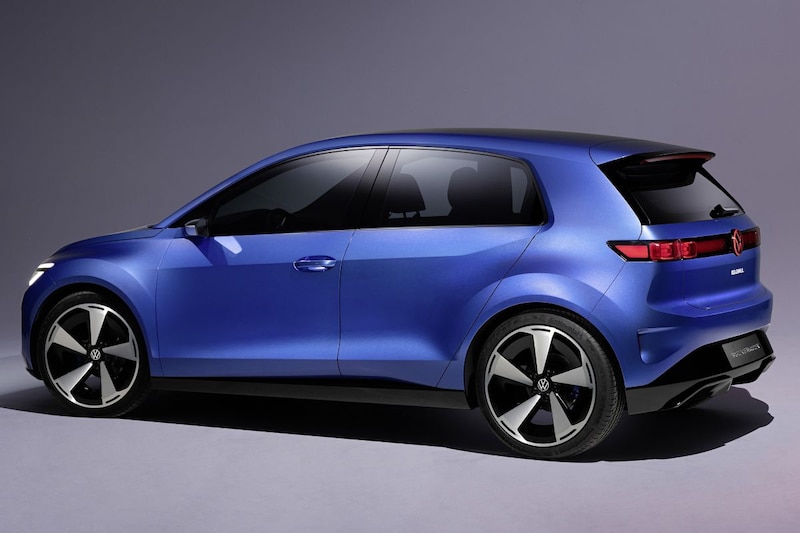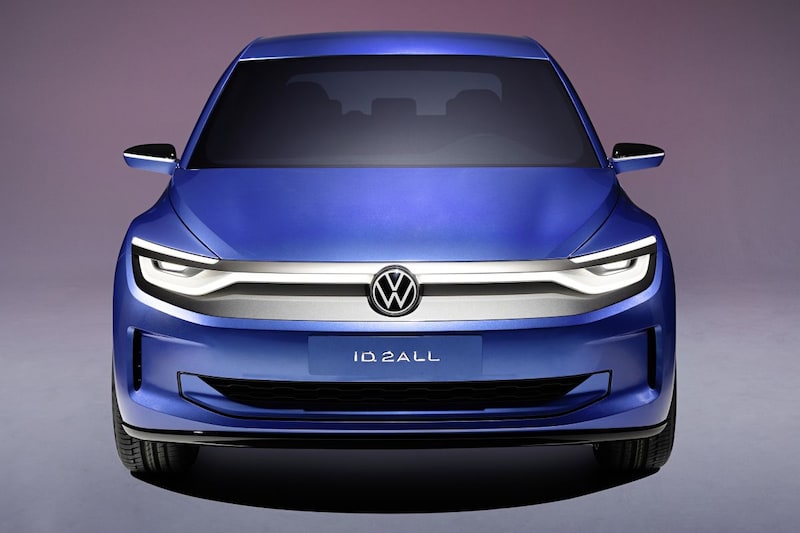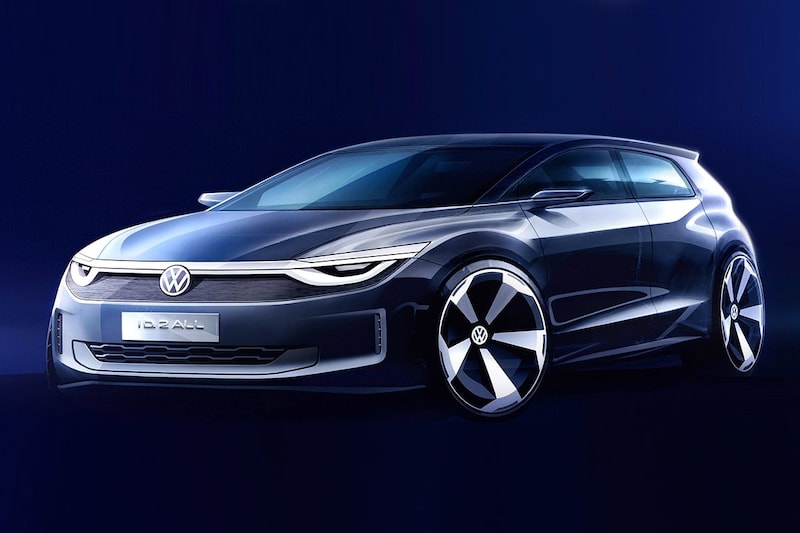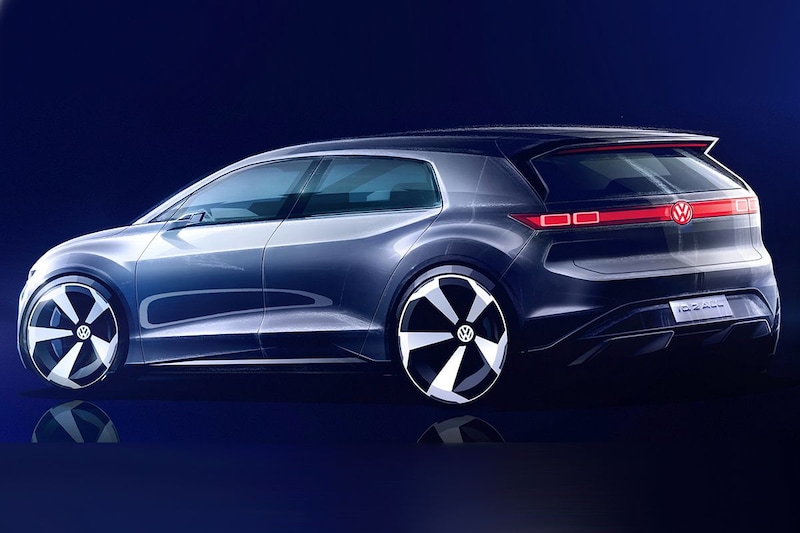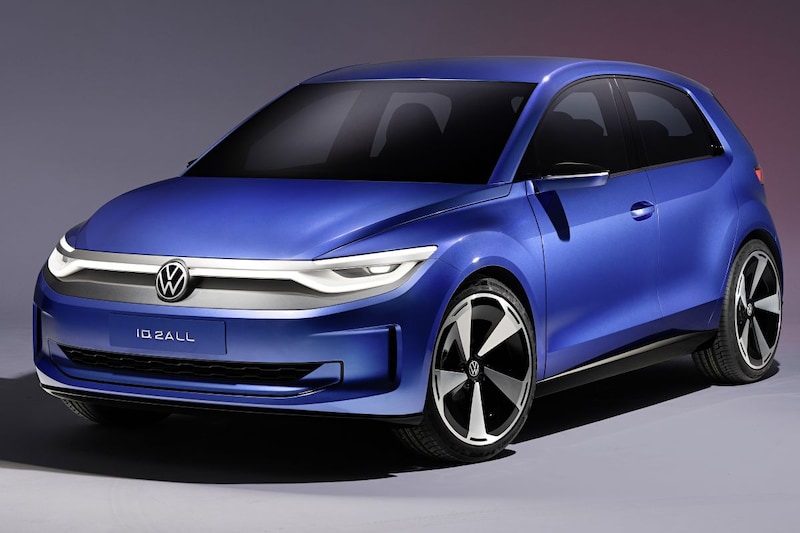Niels van Roij sees missed opportunities in the design of affordable EV


Volkswagen designers were once lord and master of conceptual work and its translation into highlights and sculptures. They completely mastered this complex aesthetic minefield. It is clear that the brand has completely lost that leadership role for years. Car designer Niels van Roij about the chaotic road to the Volkswagen ID2all Concept.
A good Volkswagen design should be timeless. The Golf IV, launched in 1997, was so good that this design still doesn’t look old-fashioned. Much better than the current Golf. The Golf IV was a conscious attempt by VW to position the model higher and was a design of exceptional quality.

The Volkswagen Golf IV: a design of exceptional quality.
As with the B4 Passat, the Golf Mk IV was an important car for both Volkswagen and the world of car design. Circa 2000 models brought a new level of exterior and interior quality and design sophistication never seen before from a mainstream brand.

The Volkswagen Passat B4, important for VW but also for the world of car design.
The Golf IV was not a fluke, but a calculated strategic move. A maneuver initiated by design and consistently implemented in the Volkswagen range. Teutonic quality was evident in the shapes of all Volkswagens. A family with a consistent spectrum of shapes honed from one lump of metal. (text continues after photos)

The Bora, the sedan based on the Golf IV, but remarkably enough you could also get the Bora as a Variant.

The Volkswagen New Beetle.

Volkswagen Lupo GTI.

The Volkswagen Microbus, in the eyes of Niels van Roij, the better ID Buzz.

The Volkswagen Phaeton.
The successors of the range around the early 2000s moved away from the clean and modernist approach and preferred a baroque, decorative theme. BA Baracus’ tinsel was dwarfed by the grille of the Golf, Jetta and Passat. The proportions, formerly slender German, joined that ‘degradation’. The lineup became obese, ungainly and baggy. Volkswagen took a very dark road. (text continues after photos)

The Volkswagen Jetta, with the Golf R32-like front.

The Volkswagen Passat also got a lot of blingbling in the nose.
After the then chief designer left around 2010, the Volkswagen aesthetic became more relevant to the brand again. With highlights such as the XL1, Golf 7, Polo and Up. However, it never got as good as the Golf IV. (text continues after photos)

The Volkswagen Golf VII, not as successful as the IV but better than the Golfs in between.

The latest generation Volkswagen Passat.

The Volkswagen Polo, still shown here as a three-door.

The Volkswagen XL1, the economy miracle of the previous decade that appeared in limited edition.
And just when we thought they had the design sheep on dry land at Volkswagen, the IDs came on the scene around 2020. For the electric range, the brand again took a resolutely different path. Disastrous proportions, hard, flat and weak-looking surfacing and thin, pinchy jewellery.
But then, the Volkswagen ID2all Concept. This car breaks again with the past. Like a ball hurtling through a pinball machine, Volkswagen design bounces from left to right. The DNA of this concept car looks fuller and richer. A change of course from all cars in the ID range, including concept cars. The model has a muscularity that betrays the design talent behind it. The subtle fender decorations are particularly sublime.
A clear heritage element of the new design language is the design of the C-pillar, a reference to the theme that Giugiaro developed for the first Golf. Other design features of the concept car are a powerful stance, the car stands well on its wheels. The ID2all has a friendly face, moreover. Also worth mentioning is the surfacing solution with bevel around the side window. Although we saw something similar at the Up in 2011.
But the ID2all also tells a story of enormous missed opportunities. It’s not very refreshing at all. The car has no elementary new design ideas for an introduction after 2023. The ID2all could actually have been in the showroom in 2010 next to the Polo and Golf. While better than the full ID range to date – a task that is not very complex – this new model could and should have been more progressive to re-establish Volkswagen as a leading brand. The ID2 looks like a car designed to please many stakeholders within Volkswagen, with the consensus being that most people would be least offended. The design theme is so generic that it’s almost not a theme. Volkswagen has failed to present the ID2 as the new market offering that the car certainly is. Meanwhile, competitors are delivering a spectrum of highly attractive designs as they proactively seek out customers in the fledgling electric car market.
Unfortunately, Volkswagen has still not found the right balance between evolutionary and revolutionary design, with relevant new design themes. Volkswagen has missed the opportunity to really add value through design to their first small electric Volkswagen car.
.
– Thanks for information from Autoweek.nl
